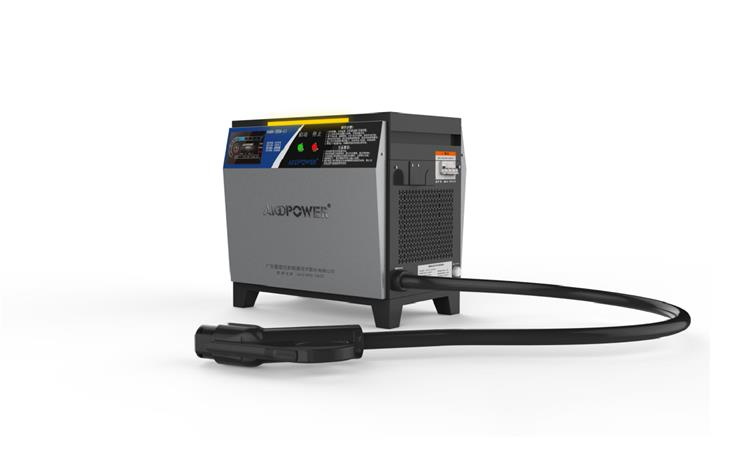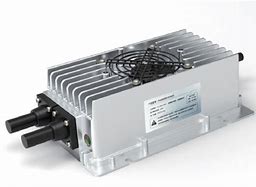A Comprehensive Guide to Efficient Electric Vehicle Charging
Introduction:
As the popularity of electric vehicles (EVs) continues to grow, so does the need for efficient charging solutions. One critical component of an electric vehicle's charging infrastructure is the on-board charger. The on board charger is responsible for converting alternating current (AC) from an external power source into direct current (DC) to charge the vehicle's battery pack. In this article, we will delve into the various aspects and specifications of on-board chargers, exploring their significance in the world of electric vehicle charging.
Power Output and Voltage:
The power output of an on board charger is an essential specification that determines the charging speed of an electric vehicle. It is typically measured in kilowatts (kW) and directly affects the charging time. Higher power outputs enable faster charging, reducing the time required to replenish the battery. On-board chargers can range from a few kilowatts to over 10 kW, depending on the vehicle model and the available power supply.
Furthermore, the voltage compatibility of the on-board charger must align with the electric grid or charging infrastructure being used. While AC power sources generally provide voltage levels around 110-240 volts, DC fast charging stations typically operate at much higher voltages, such as 400 volts or more. Ensuring compatibility between the on-board charger's voltage requirements and the power supply is crucial to enable effective charging.

Charging Connector Types:
On-board chargers are designed to accommodate different types of charging connectors, which vary depending on geographical locations and charging standards. Some commonly used charging connector types include:
a. Type 1 (J1772): This connector is prevalent in North America and Japan, providing AC charging capability. It is compatible with lower power levels, typically up to 7.4 kW.
b. Type 2 (Mennekes): Widely used in Europe, this connector supports both AC and DC charging. It allows for higher power levels, often up to 22 kW or more.
c. Combined Charging System (CCS): This connector combines the Type 2 connector with additional DC pins. It is the prevalent standard for DC fast charging in Europe and North America, enabling charging speeds up to 350 kW or higher.
d. CHAdeMO: Initially developed in Japan, this connector is primarily used for DC fast charging. It supports charging speeds up to 50 kW or more and is commonly found in Asian markets.
e. Tesla Supercharger: Exclusive to Tesla vehicles, this connector provides high-speed DC charging specifically designed for Tesla's electric car models.

Efficiency and Power Factor Correction:
Efficiency is a critical factor when evaluating the performance of an on-board charger. It refers to the ratio of power output to power input and is generally expressed as a percentage. Higher efficiency implies that a larger proportion of the electrical energy from the power source is effectively transferred to the battery, minimizing energy losses and reducing charging costs.
Additionally, many modern on-board chargers incorporate Power Factor Correction (PFC) technology. PFC ensures that the charger draws power from the grid efficiently, minimizing the reactive power and maintaining a near-unity power factor. A high power factor reduces stress on the electrical grid and helps maximize overall energy efficiency.
Communication Protocols:
On-board chargers often incorporate various communication protocols to facilitate interaction with the charging infrastructure, enabling features like smart charging, monitoring, and data exchange. The most common communication protocols used in on-board chargers include:
a. OCPP (Open Charge Point Protocol): OCPP is an open-source protocol that allows communication between charging stations and on-board chargers. It enables interoperability and standardization across different charging networks.
b. ISO 15118: This protocol facilitates secure communication between the electric vehicle and the charging infrastructure. It supports features such as plug-and-charge, where authentication and authorization occur automatically.
c. CAN (Controller Area Network): CAN bus is a widely used communication protocol in the automotive industry. It allows the exchange of data between various vehicle components, including the on-board charger.
Conclusion:
On-board chargers are crucial components of electric vehicles, enabling efficient charging by converting AC power to DC power for battery replenishment. Understanding the various specifications and features of on-board chargers is essential for both manufacturers and consumers. Factors such as power output, voltage compatibility, charging connector types, efficiency, power factor correction, and communication protocols play a significant role in determining the charging capabilities and user experience of electric vehicles. As EV adoption continues to rise, advancements in on-board charger technology will further enhance the charging infrastructure, making electric vehicles even more practical and appealing for a sustainable future.
Next:Forklift Charger Maintenance: Ensuring Reliability and Longevity
Previous:A Comprehensive Guide to Finding the Perfect Charging Solution
Contact Person: Miss. Kiki
| WhatsApp : | +8617763224709 |
|---|---|
| Skype : | +8617763224709 |
| WeChat : | +8617763224709 |
| Email : | kiki@lifepo4-battery.com |